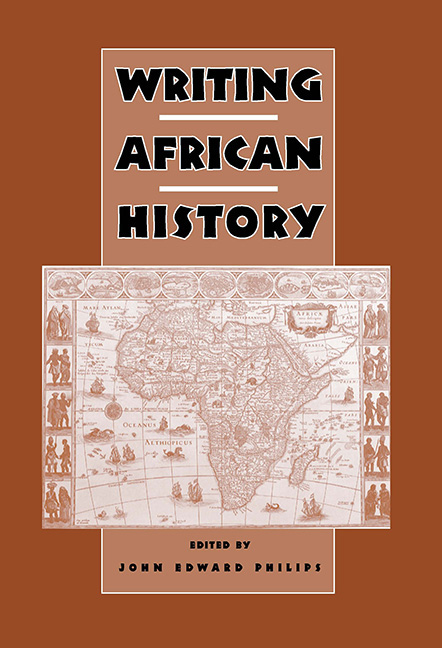Book contents
- Frontmatter
- Dedication
- Contents
- Acknowledgments
- Introduction
- Part I Background
- Part II Sources of Data
- 2 Archaeology and the Reconstruction of the African Past
- 3 Writing African History from Linguistic Evidence 86
- 4 Physical Anthropology and African History
- 5 The Importance of Botanical Data to Historical Research on Africa
- 6 Oral Tradition as a Means of Reconstructing the Past
- 7 Oral Sources and the Challenge of African History
- 8 Arabic Sources for African History
- 9 European Documents and African History
- 10 Mission and Colonial Documents
- Part III Perspectives on History
- Part IV Conclusion
- Contributors
- Index
- Miscellaneous Endmatter
7 - Oral Sources and the Challenge of African History
from Part II - Sources of Data
Published online by Cambridge University Press: 11 May 2017
- Frontmatter
- Dedication
- Contents
- Acknowledgments
- Introduction
- Part I Background
- Part II Sources of Data
- 2 Archaeology and the Reconstruction of the African Past
- 3 Writing African History from Linguistic Evidence 86
- 4 Physical Anthropology and African History
- 5 The Importance of Botanical Data to Historical Research on Africa
- 6 Oral Tradition as a Means of Reconstructing the Past
- 7 Oral Sources and the Challenge of African History
- 8 Arabic Sources for African History
- 9 European Documents and African History
- 10 Mission and Colonial Documents
- Part III Perspectives on History
- Part IV Conclusion
- Contributors
- Index
- Miscellaneous Endmatter
Summary
African history, perhaps more than other domains of history, has had to be inventive in its use of sources and eclectic in its approach to evidence: Africanists draw upon linguistic, archaeological, ethnographic, genealogical, oral-performative, and oral-interview evidence in addition to the documentary sources more conventionally understood as primary sources within the discipline. This broad view of sources is due in large part to the relative paucity of written documentary materials for the continent. It would be a mistake, however, to overstate the absence of documentary sources for the construction of African history (see chapter 9, by John Thornton, in this volume): depending on the region and period in question, documentary evidence can be quite rich. It would be an even bigger mistake to imagine that African historians by and large rely on any one kind of evidence to the exclusion of others—the long history of debate over the nature and suitability of oral tradition for the reconstruction of the African past, which I shall discuss below, has obscured the reality that few historians rely exclusively on oral evidence in their work. Historical linguists supplement their thinking with archaeological evidence, archaeological historians draw inspiration from oral tradition, champions of oral evidence complement their work with documentary sources, and so on. Our confidence in our reconstructions of the past derives in part from the ways in which these various sources and methods, when used together, can refine, challenge, inspire, reinforce, or confirm one another. One of the most dramatic ways in which sources complement one another has been when oral traditions have been used to successfully locate important archaeological sites.
In what follows I shall focus on oral historical data that is solicited by the researcher, in order to contextualize work on Africa that I regard as being in dialogue with the broader post-war development of oral history within the discipline of history. David Henige's contribution to this volume (chapter 6) has addressed one important kind of oral evidence that has been central to the development of African history as a discipline, namely oral tradition. Oral traditions are generally stories about the past that local populations produce and reproduce through oral performative transmission, as a means of preserving their own history and consolidating or contesting a sense of belonging and identity.
- Type
- Chapter
- Information
- Writing African History , pp. 191 - 215Publisher: Boydell & BrewerPrint publication year: 2005

